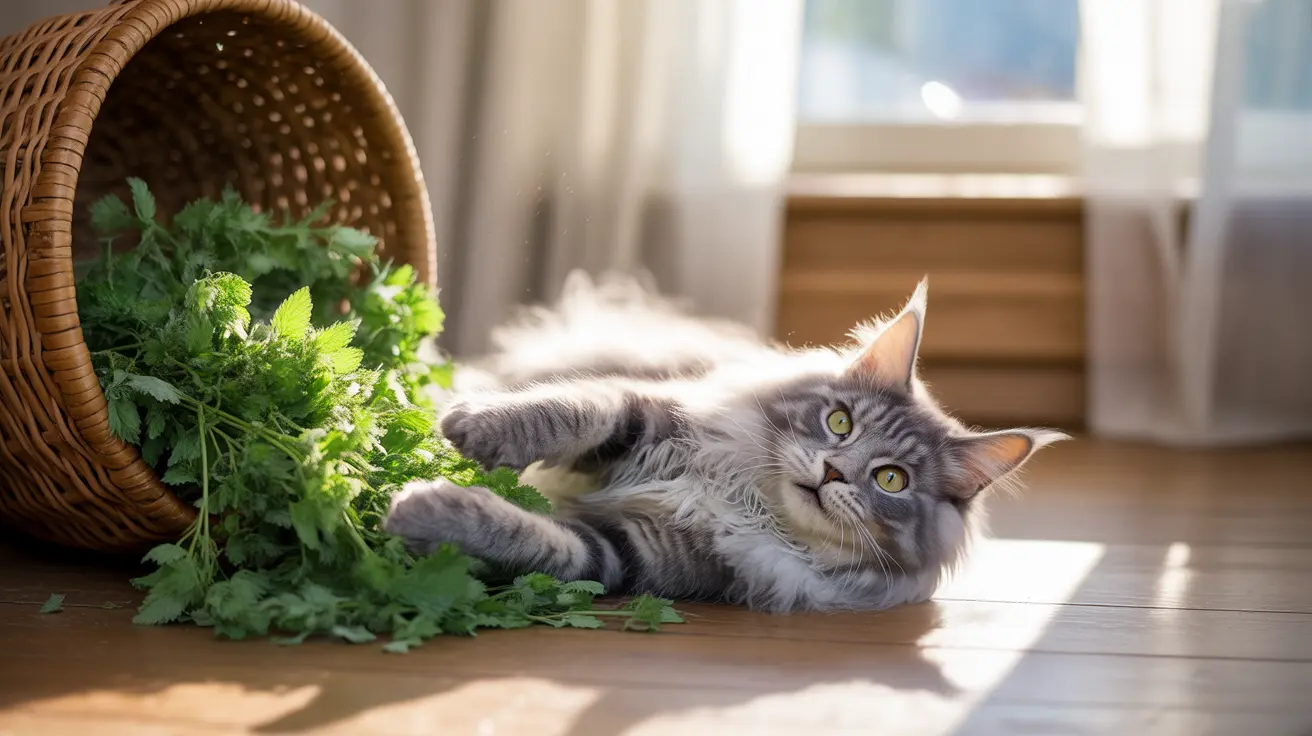If you've ever given your cat some catnip, you've likely witnessed the amusing spectacle of them rolling around in apparent ecstasy. This common feline behavior is more than just entertaining - it's a fascinating combination of instinct, chemistry, and evolutionary adaptation that reveals much about our feline friends' natural behaviors.
Recent scientific research has uncovered that this rolling behavior serves both pleasurable and practical purposes, from activating feel-good receptors in the brain to providing natural protection against insects and parasites. Let's explore the science behind why cats roll in catnip and what this behavior means for their wellbeing.
The Science Behind Catnip's Effects
Catnip (Nepeta cataria) contains a compound called nepetalactone that triggers powerful responses in cats' brains. When cats encounter this herb, their olfactory system processes the compound, leading to stimulation of areas associated with both pleasure and instinctual behaviors.
The rolling behavior specifically helps cats distribute the nepetalactone oils across their fur and skin, maximizing their exposure to the compound's effects. This interaction creates a cascade of neurological responses that can last anywhere from 10 to 15 minutes.
Understanding the Rolling Response
When cats roll in catnip, they're engaging in a behavior that serves multiple purposes. The physical act of rolling helps spread the herb's active compounds throughout their fur, while also expressing their enjoyment of the experience. This behavior often accompanies other reactions like purring, meowing, and playful movements.
Interestingly, the rolling response appears to be an inherited trait, with approximately 50-70% of cats showing sensitivity to catnip. Kittens don't typically develop this response until they reach sexual maturity at around 3-6 months of age.
The Evolutionary Benefits
Recent studies have revealed that cats' rolling behavior in catnip may have evolved as a natural defense mechanism. The nepetalactone that coats their fur after rolling acts as a powerful insect repellent, protecting cats from mosquitoes and other biting insects that could transmit diseases.
This discovery suggests that what appears to be purely recreational behavior actually serves an important survival function, highlighting how instinctual behaviors often have practical benefits in nature.
Safe Usage and Environmental Enrichment
While catnip is generally safe for cats, it's important to use it responsibly. Offering catnip a few times per week can provide valuable environmental enrichment for indoor cats, helping prevent boredom and encourage natural behaviors. However, some cats may become overstimulated, so it's wise to monitor their reactions, especially during initial exposures.
Fresh or dried catnip can be offered in various ways - sprinkled on scratching posts, placed in toys, or simply scattered in play areas. The key is to observe your cat's individual response and adjust accordingly.
Frequently Asked Questions
Why do cats roll in catnip and what does this behavior mean?
Cats roll in catnip to spread the active compound nepetalactone across their fur and skin. This behavior serves both a pleasurable purpose, activating reward centers in their brain, and a practical purpose, providing natural insect-repelling properties.
How does catnip's chemical nepetalactone affect my cat's brain and mood?
Nepetalactone binds to receptors in the cat's nasal tissue, stimulating areas of the brain associated with emotion and behavior. This can create a euphoric effect similar to natural opioids, resulting in various behaviors including rolling, purring, and increased playfulness.
Are all cats attracted to catnip, or do some not respond at all?
Not all cats respond to catnip - sensitivity is genetic, with approximately 30-50% of cats showing no reaction. This trait typically becomes active when cats reach 3-6 months of age.
Can rubbing catnip on a cat's fur help repel insects and parasites?
Yes, recent research has shown that when cats roll in catnip, the nepetalactone that coats their fur acts as an effective natural insect repellent, particularly against mosquitoes and other biting insects.
How should I safely use catnip to enrich my cat's environment without causing overstimulation?
Offer catnip in moderation, limiting exposure to a few times per week. Monitor your cat's reaction and provide it in a safe space where they can't hurt themselves if they become excited. Store catnip in an airtight container in the freezer to maintain its potency.
Conclusion
The fascinating behavior of cats rolling in catnip represents a perfect blend of pleasure and practicality in nature. Understanding this behavior helps us better appreciate our feline companions' natural instincts and provides insights into how we can enrich their lives while supporting their wellbeing.






